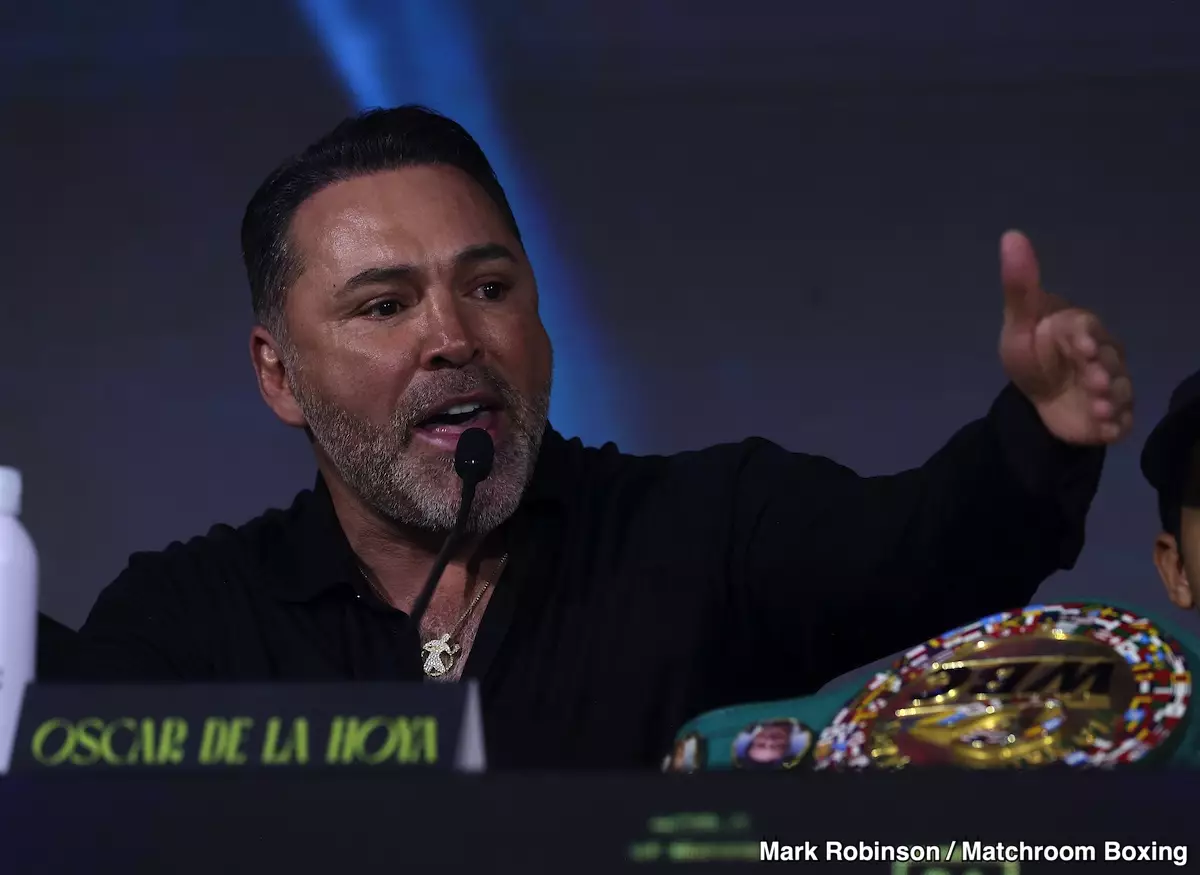Oscar De La Hoya, once a celebrated boxing champion and now a leading promoter with Golden Boy Promotions, continues to carve out a complex legacy inside the fight game—though not always in the traditional sense. While many retired fighters transition quietly into promotion, De La Hoya’s style is distinctly bold and confrontational. He frequently entangles himself in public spats with current fighters, brushing aside the conventional boundaries expected of someone now positioned as an architect of others’ careers. His ongoing friction with Canelo Alvarez is well documented, but recently, De La Hoya has zeroed in on Edgar Berlanga, injecting fresh drama into the boxing narrative.
Beyond Promotion: De La Hoya’s Strategic Provocations
In the lead-up to Edgar Berlanga’s July 12 fight against British contender Hamzah Sheeraz, De La Hoya released a provocative challenge directed squarely at Berlanga. Instead of adopting a neutral stance as a promoter, De La Hoya opted for a theatrical display, seemingly daring Berlanga to “slap” him. This baiting serves dual purposes: it recalls a long-standing beef between the two, and it intensifies public interest in Berlanga’s upcoming bout. The ultimate question is whether Berlanga, known for his aggressive in-ring style and nickname “The Chosen One,” will rise to the occasion and engage De La Hoya’s challenge directly, potentially bridging the line between promotional hype and personal feud.
Heightening Stakes Through Personal Conflict
De La Hoya’s antics add an intriguing subplot to what fights fans might otherwise see as routine middleweight clashes. Berlanga and Sheeraz already have tension brewing, exchanging verbal barbs ahead of their showdown in New York. Adding De La Hoya’s dramatic flare not only fuels media attention but shapes the fight’s psychological backdrop. This level of personal entanglement is a powerful promotional tool, reflecting De La Hoya’s deep understanding that boxing thrives not just on physicality, but on narrative—on storylines that keep fans emotionally invested.
Implications for Boxing’s Promotional Landscape
While some observers might criticize De La Hoya’s public provocations as unbecoming or distracting, there is no denying the effectiveness of his approach. His willingness to blur the lines between promoter and provocateur revitalizes interest in events that might otherwise be overshadowed. However, this approach is a double-edged sword; it risks alienating fighters who prefer professional distance or could escalate tensions beyond the promotional realm into genuine animosity.
Berlanga, after a recent setback in a decision loss to Canelo Alvarez, has much to prove. Sheeraz, undefeated except for a draw in a world title bid, is also hungry for recognition. De La Hoya’s interference elevates the bout’s stakes, contributing a psychological element few promotions actively cultivate.
Personal Drama as a Catalyst, Not a Distraction
Ultimately, De La Hoya’s promotional maneuvers illustrate a calculated strategy to infuse personal conflict into boxing’s highly competitive environment. Whether or not Berlanga decides to engage De La Hoya’s slap challenge is secondary; what matters more is De La Hoya’s grasp of boxing’s entertainment essence. In a sport where fighters are often praised just for their skills inside the ring, De La Hoya reminds everyone that sometimes, the story outside the ropes sells just as powerfully as punches landed within them.

